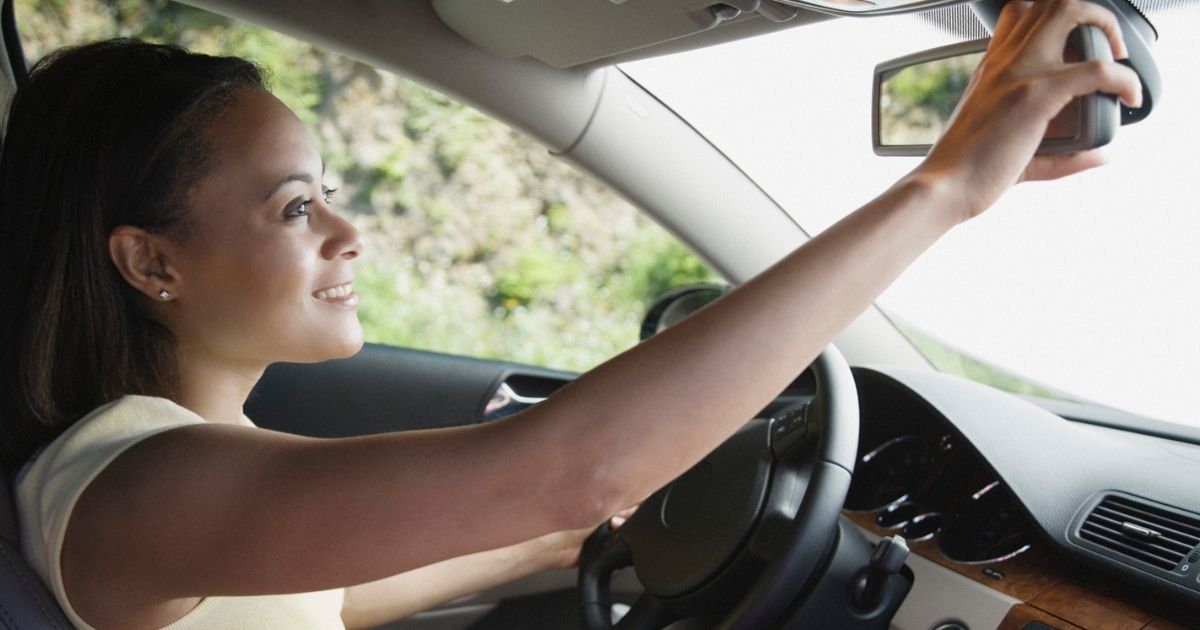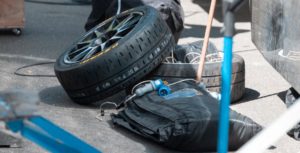You don’t have to be an experienced driver to minimize your chances of causing an accident.
About 20 percent of drivers get distracted while driving. Do you want to be part of that statistic? Probably not.
Remaining focused and a simple trick of checking your mirrors often can help you stay away from accidents.
I’ve always checked my mirrors when driving and I’ve never rammed into another car. Let me share my tips.
From my experience, it is practical to check all your three car mirrors within every 10 seconds. While driving in traffic, my frequency of checking the mirrors is usually about every three seconds. In less busy roads, that frequency drops but remains within the 10 seconds I’ve mentioned.
I’ve explained my answer in-depth in the following section.
How often should you check your mirrors while driving?
From my short answer above, you can see the frequency of checking your side mirrors and rear mirror varies.
When I’m cruising on the highway at about 80 miles per hour, I tend to glance at all my mirrors every 10 seconds. However, I find myself checking my rear view mirror more often than the side mirrors because of no lane changing.
Also, since my highway driving needs few to no road position changes, checking my rear view mirror gives a great distance estimation of the vehicle behind me.
Side mirrors have concave mirrors that show the object further than their actual position.
The other reason I glance at my car mirrors less often on the highway is because I’m usually at high speed and need to focus on the road ahead.
On a busy road, I check my mirrors every few seconds.
On such roads all the vehicles around have slowed down and I can afford to take my eyes off the road ahead more often.
I’ve shared below the order in which I check my mirrors.
How to remember to check mirrors when driving
Quite a number of drivers have trouble remembering to check their car mirrors when driving.
For me, checking mirrors is second nature. Let me share how I manage to do it that easily.
The idea is simple. Every time I get into a car, I remind myself it only takes one second for an accident to take place. So, I stay alert and focused, which involves keeping my eyes on the road ahead and checking my mirrors often.
While driving, I also keep reminding myself that the other drivers on the road can lose their focus at any time. With that in mind, I just have to check my mirrors to keep a safe distance from other cars around me.
Remembering how to often take a glance at your rear and side mirrors is more of a habit. You need to practice to hone this habit.
I went back in time to when I was a beginner driver to remember what I did to be good at checking my mirrors. Here are tips you can use to remember to check your car mirrors.
1. Get a “co-driver”
Get a passenger to act as a co-driver. The work of the passenger is to keep you reminding you to check your mirrors.
The passenger can use a stopwatch to count every 10 seconds. If you prefer you can set the interval at 15 seconds.
Do this trick on a less busy road several times and it will start to stick as a habit.
2. Practice for 30 minutes everyday
If you really want to never forget to check your mirrors, there’s no other way than practicing.
Take 30 minutes off your schedule and go practice to check your car mirrors when driving.
During the practice the idea is to keep checking the rear and side mirrors to know what’s around your car while focusing on your driving.
Practice every day for a couple of weeks and you’ll soon find a comfortable rhythm and a sense of how often to glance at your mirrors depending on the driving situation.
3. Use the Mirror-Signal-Maneuver (MSM) approach
I remember my driving instructor always reminding me to check my mirrors first before signaling if I wanted to change my road position.
Over time it became part of my driving.
So, if you keep forgetting to check your mirrors, tell yourself to always remember the initials MSM.
Before you signal you want to change lanes or make a turn, always check the mirrors.
If you want to change your road position to the left, check the rear view mirror then the left side mirror then signal. When planning to change lanes to the right, check the rear view mirror then the right side mirror then signal before moving to the right.
4. Use triggers
The triggers you’d want to use to help you always remember to check your side mirrors are the following.
- When you want to change lanes
- When slowing down
- When you want to accelerate
- If you’re planning to make a turn
I’ll explain why it’s necessary to check your mirrors in the situations listed. Keep reading.
5. Enroll for defensive driving lessons
If you’ve tried the tips above and you still can’t remember to check your car mirrors when driving, then the last resort is to go for defensive driving lessons.
These driving lessons are intense and will really hone your driving skills.
Just to highlight what these classes entail, you’ll learn to not only learn how to be a keen driver with minimal mistakes on the road, but also be aware of other drivers and how to quickly react to incidents as a driver.
How do you check mirrors while driving?
The correct way of checking your mirrors is using the MSM approach.
Start with the rear view mirror then the side mirrors. As I have already mentioned, to be aware of what’s happening on the left side of your car you need to check the rear then the left side mirror.
To know what’s on the right side of your car, you have to take a glance at the rear then the right hand side mirror.
If it’s already a habit, you’ll find yourself checking the rear view mirror more often than the sides. Afterall checking the rear mirror more frequently is a good thing since it gives you a more accurate distance estimation of the car behind than the sides.
When should you check your mirrors when driving?
If you’ve read the section above about how to remember to check your mirrors, I mentioned some triggers.
Actually, the triggers I listed are good indicators for when you should check your car mirrors when driving. Let’s go through them.
1. Before you change lanes or road position
You’ll be putting yourself in danger if you change road lanes without checking your mirrors.
So, if you’re planning to change lanes in the next few miles ahead, make sure to check your rear view mirror then either the left or right side mirror depending on where you want to move.
When in such a situation you can frequently check your sides and only change your road position if the road is clear and there’s no car approaching at a high speed.
You also need to signal early enough to let the drivers behind you know you’re about to change lanes.
2. When braking
You do not want to step on the brakes especially without checking the rear view mirror.
Suddenly slowing down could cause the driver to ram into you if they hadn’t maintained a safe braking distance.
Taking a glance at the rear before braking will give you an idea of gently or quickly you can safely slow down.
3. When you’re about to accelerate
Make sure before you step on the gas to check all the three mirrors.
Knowing how other drivers around you are behaving will help you accelerate only when it’s safe. Accelerating without checking your rear and sides can easily lead to an accident especially if there’s another driver who’s already accelerating and planning to change lanes after overtaking you.
4. When you want to turn, exit a road, or join another road
Imagine making a left turn without checking your left side mirror. That’s dangerous.
You can easily crash into the vehicle on your left.
Start actively checking your mirrors about a mile before your next turn. Do the same when you’re about to exit a road or want to join another road to avoid a T-bone accident.
Conclusion
Checking the three mirrors on your car is a basic practice that many drivers learn early on as beginner drivers. Your instructor will keep reminding you to glance at your mirrors.
When on your own, you have to check the rear and side mirrors often to avoid getting into an accident. I do it about every 10 seconds. On a less busy road, you can afford to check after 20 to 30 seconds.
Generally, on a busy road the frequency of checking the three mirrors should be higher than on a road with few to no cars.



